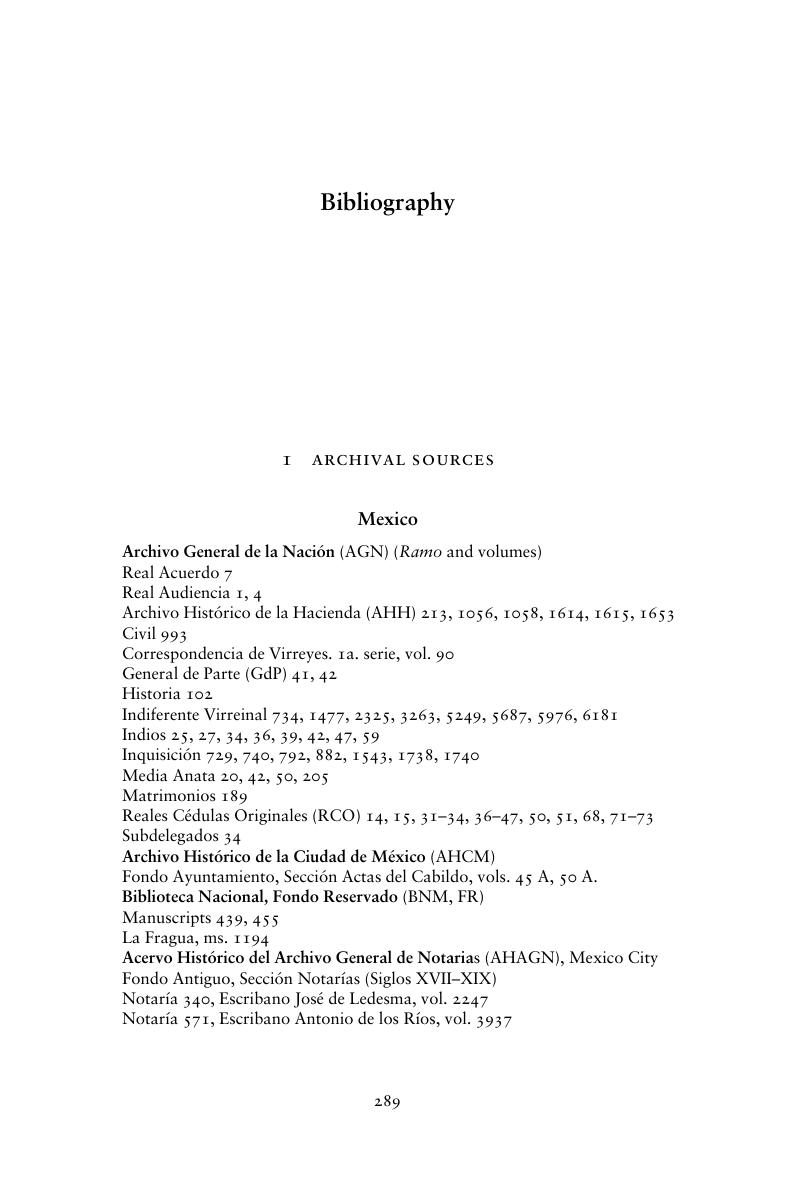Book contents
- Corruption and Justice in Colonial Mexico, 1650–1755
- Cambridge Latin American Studies
- Corruption and Justice in Colonial Mexico, 1650–1755
- Copyright page
- Contents
- Maps, Tables, and Figures
- Acknowledgments
- A Note on Terms
- Abbreviations
- Book part
- Introduction
- 1 Empire of Justice
- 2 From Judicial to Administrative Corruption
- 3 “This Custom or Better Said Corruption”: Legal Strategies and the Native Trade with the Alcaldes Mayores
- 4 “Vile and Abominable Pacts”: The Sale of Judicial Appointments and the Great Decline of Viceregal Patronage
- 5 Criminal Process and the “Judge Who Is Corrupted by Money”
- 6 Guilt and Punishments for Fraud, Theft, and the “Grave Offense of Bribery or Corruption”
- 7 The Politics of Justice: Francisco Garzarón’s Visita (1716–1727)
- Conclusion: Approaching Historical Corruption
- Appendix
- Glossary
- Bibliography
- Index
- Other Books in the Series (continued from page ii)
- References
Bibliography
Published online by Cambridge University Press: 15 April 2019
- Corruption and Justice in Colonial Mexico, 1650–1755
- Cambridge Latin American Studies
- Corruption and Justice in Colonial Mexico, 1650–1755
- Copyright page
- Contents
- Maps, Tables, and Figures
- Acknowledgments
- A Note on Terms
- Abbreviations
- Book part
- Introduction
- 1 Empire of Justice
- 2 From Judicial to Administrative Corruption
- 3 “This Custom or Better Said Corruption”: Legal Strategies and the Native Trade with the Alcaldes Mayores
- 4 “Vile and Abominable Pacts”: The Sale of Judicial Appointments and the Great Decline of Viceregal Patronage
- 5 Criminal Process and the “Judge Who Is Corrupted by Money”
- 6 Guilt and Punishments for Fraud, Theft, and the “Grave Offense of Bribery or Corruption”
- 7 The Politics of Justice: Francisco Garzarón’s Visita (1716–1727)
- Conclusion: Approaching Historical Corruption
- Appendix
- Glossary
- Bibliography
- Index
- Other Books in the Series (continued from page ii)
- References
Summary

- Type
- Chapter
- Information
- Corruption and Justice in Colonial Mexico, 1650–1755 , pp. 289 - 333Publisher: Cambridge University PressPrint publication year: 2019

